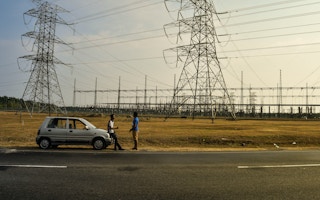Southeast Asia is well aware of the human, financial and economic tolls that climate change has brought, but insufficient attention has been paid to the energy systems of the region. Climate change poses two types of challenges to energy systems. First, climate change will impact the availability of resources used for energy generation. For example, inconsistent water flow is expected to reduce hydropower capacity in Cambodia, Lao PDR, Myanmar, Thailand and Vietnam. Heat waves and droughts will influence the availability of water required for cooling thermal power systems, thereby reducing generation capacity. Secondly, extreme weather events pose threats to physical infrastructures, including power plants and electricity grids. Increasing intensity and frequency of wildfires, flooding, heavy winds, landslides and storms will threaten transmission grids and renewable energy technologies. Between 2009-2020, natural hazards resulted in more than 33,000 fatalities and economic damages exceeding US$97 billion in the region.
Achieving energy transition goals in Southeast Asia will require the development of energy systems that are not only low-carbon but also resilient to the impacts of climate change. The immediate priority of Southeast Asian governments is mitigation, as currently around 80 per cent of the region’s total primary energy supply comes from fossil fuels. Yet, scientific evidence suggests that climate change will undermine the efficiency and reliability of energy generation, transmission and distribution. While mitigation efforts must continue, policymakers should also prioritise the adaptation of energy infrastructures.
Due to the enormity of environmental threats, climate adaptation is becoming increasingly relevant in the development of energy projects. Early policy intervention on adaptation is particularly important in Southeast Asia, given that the region will need to invest around US$80-150 billion annually by the late 2020s to meet its clean energy targets. Environmental hazards may also impact the region’s ambitious cross-border energy interconnection projects.
Simply knowing that climate change will cause enormous damage to energy systems is not enough. Stakeholders concerned about the impact of climate change on energy systems need high quality data that can inform adaptation policies. Insights into climatic impacts of energy infrastructures can be obtained through models that use a range of cutting-edge technologies to develop future energy-climate scenarios.
There are three techniques that are currently used for developing climate models of energy infrastructures which can be implemented in Southeast Asia.
First, dynamic downscaling is a process of extracting data from global climate models to understand the impacts of climate change at a regional or local level. Dynamic downscaling can be used for planning the adaptation of critical infrastructures. For example, the US Department of Energy’s Argonne National Laboratory recently collaborated with the telecommunications company AT&T to develop the ‘Climate Change Analysis Tool’ which predicts risks to infrastructure from extreme winds and heat.
…scientific evidence suggests that climate change will undermine the efficiency and reliability of energy generation, transmission and distribution. While mitigation efforts must continue, policymakers should also prioritise the adaptation of energy infrastructures.
The Tool uses models that were developed by downscaling global climate projections to local scales using supercomputers. In recent years, the Centre for Climate Research Singapore (CCRS), a research department of the Meteorological Service Singapore (MSS), has collaborated with the National Supercomputing Centre to downscale global climate models to develop regional climate models for Southeast Asia. Such technologies can be used to identify future climatic threats to electricity grids and power plants in the region and generate consensus for urgent action.
Second, satellite imagery and remote sensing are increasingly used to make informed decisions on infrastructure development, as high-resolution images provide reliable information on the optimal location and routes of roads, railways and pipelines. Currently, satellite imagery is used to analyse electricity access and identify key features of power plants and transmission lines. These technologies can also be used to identify climatic risks to energy infrastructures. For example, the Norwegian company DNV uses satellite-based remote sensing to monitor the vulnerability of energy infrastructures to natural hazards, such as floods and fires. Southeast Asian policymakers can use satellite technology to identify optimal routes and sites for energy infrastructures and also access real-time data that can facilitate timely responses during natural disasters.
Lastly, Big Data, or large datasets that are computationally processed to reveal patterns, are another important tool in climate adaptation policies. One example is Haze Gazer, a crisis analysis tool that helps disaster management units to visualize haze crises in Indonesia. The tool uses advanced data mining and analytics to inform decision-making efforts in areas affected by fire and haze events. Research shows that data analysis technologies can identify vulnerabilities of energy infrastructures to climate change and natural disasters. Regional collaboration can facilitate the development of reliable datasets and analysis tools on existing domestic and cross-border energy infrastructures in Southeast Asia.
Despite some important progress, climate models that specifically focus on energy systems in Southeast Asia are not widely available. Unilateral climate models also do not inform the region’s aspirations for greater energy integration through initiatives such as the ASEAN Power Grid. A collaborative, regional approach to climate modelling of energy systems can inform the development of effective adaptation policies and drive deeper energy integration. In this context, closer dialogue and exchanges among ASEAN countries on climate modelling will be crucial towards enhancing the resilience of the region’s energy infrastructures.
Mirza Sadaqat Huda is Lead Researcher in the Climate Change in Southeast Asia Programme, ISEAS - Yusof Ishak Institute.
This article was first published by ISEAS – Yusof Ishak Institute as a Fulcrum commentary.











